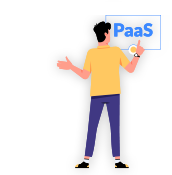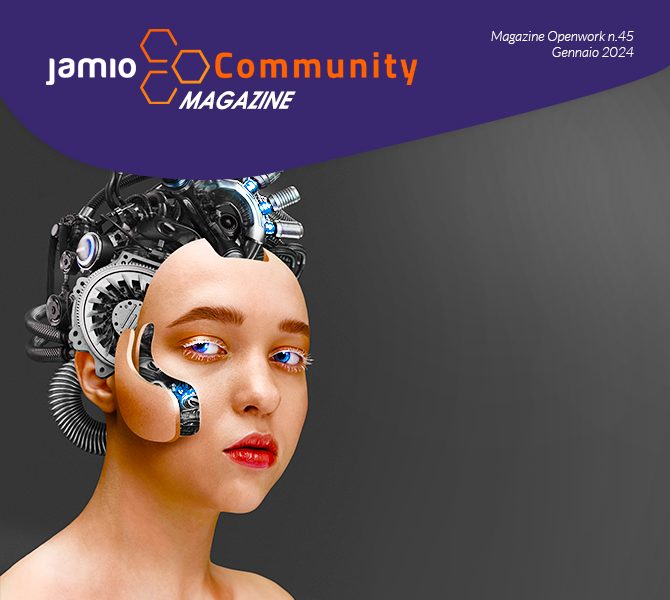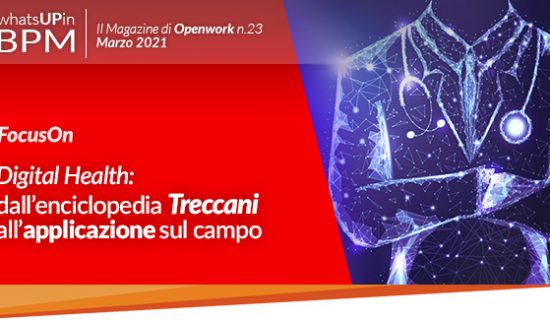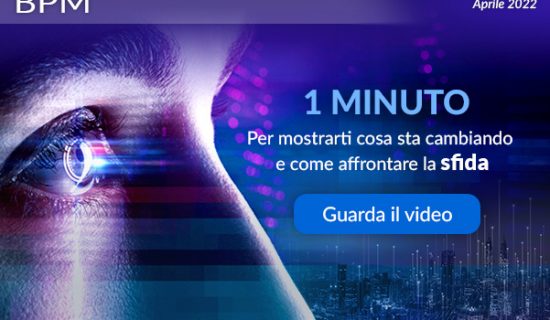The year 2023 was certainly the year when AI went from being a topic for insiders and a behind-the-scenes presence for years to a topic in the public domain.
The wide use ofgenerative AI (GAI) by the general public has stimulated a multitude of questions concerning the impacts on the future of work.
One of the activities that is certainly impacted by the use of GAI is software development, and therefore many wonder whether software developers will be needed in the future.
To answer this question, it is necessary to clarify that a software application in the enterprise environment is not a mere code fragment but a set of software components designed, implemented and orchestrated together to meet a specific business need. In the development and use of a software application, a variety of functional, efficiency, usability, security, and compliance problems can occur that only a critical and creative approach, typical of human endeavor, can solve.
Developers will therefore remain essential in software development activities: GAI will help to streamline and automate some activities in the software development cycle.
And could low-code/ no-code (LC/NC) cloud platforms one day be supplanted by GAI?
Interesting is the answer given by ChatGPT himself to the question. "Will generative artificial intelligence be able to supplant LC/NC development platforms ?". Below is the answer.
GAI and LC/NC platforms serve different purposes and can coexist, but one is unlikely to completely supplant the other. Let's look at some considerations:
- Complementarity: GAI could be used to enhance the capabilities of LC/NC platforms. For example, AI could assist in generating automated code based on specific requirements, further reducing the amount of code that developers have to write manually.
- Complexity of Projects.: For more complex and specific projects, the expertise of more experienced developers may still be needed. LC/NC platforms are often optimal for simpler, more standard projects, while generative AI may not cover all facets of more complex projects.
- Customization and Flexibility: LC/NC platforms are designed to be accessible to non-developers, allowing them to quickly create applications. However, generative AI may not be as flexible or customizable, especially when it comes to meeting specific business needs.
- Continuous Learning: GAI could benefit from continuous learning to improve its capabilities over time. However, LC/NC platforms are more user-directed and user-controlled, allowing greater control over application evolution without depending on machine learning processes.
- Integration of Data and Business Processes.: LC/NC platforms often focus on the ease of data and business process integration. Generative AI may require more effort to achieve a similar level of integration without human intervention.
In conclusion, while GAI and LC/NC platforms can collaborate and influence each other, it seems unlikely that one will completely replace the other. The choice between the two will depend on the specific requirements of the project, the complexity of the application, and the desired level of control and customization. We will likely see increasing integration of AI technologies within LC/NC platforms to enhance their functionality and make application development easier.

Ultimately, both technologies aim to simplify application development but lend themselves to distinct use cases and target different types of users. More specifically:
GAI
- GAI, like GPT-3 and similar models, is primarily designed to generate text o contents similar to human based on input data or prompts.
- Can assist developers by generating code snippets, providing natural language explanations or automating text generation tasks.
- GAI is a tool that developers and experts in the field can use to simplify certain aspects of their work, such as the documentation or theassistance in writing of code.
LC/NC Platforms
- LC/NC platforms are designed to simplify the development process of comprehensive software applications, providing visual interfaces, draggable components, and predefined templates.
- They are intended for users with different levels of technical expertise, including. business analysts e citizen developer.
- They aim to reduce the need for manual coding and speed up the development of applications for a wider audience of users.
- A platform is an environment that not only allows the software application to be written but also allows it to be executed, ensuring resilience, efficiency, disaster recovery, security, compliance, this is a service in which the functional component is only a part of the entire service offered.
It is therefore unlikely that GAI can replace the LC/NC platforms, both technologies have their place in the software development landscape, rather GAI is a great opportunity for LC/NC platform manufacturers to realize even more of a citizen developer. In fact, GAI can simplify those application "writing" activities that still require coding skills (scripting, rule writing, etc.) and automatically compose, based on the business need, application prototypes from which to develop the application to be sent to production.
Ultimately, GAI and LC/NC platforms are two powerful tools that integrated will make software development even more efficient.
Managing extended processes: 2 use cases

CASE 1 - Extending processes outside of one's own organization.
We have already introduced the topic of extended processes or intercompany, that is, of those processes that extend beyond the boundaries of the organization (magazine #43).
These processes, we recall, can include collaboration e the exchange of information between companies or entities to create value for all involved. We can identify them, for example, in supply chain management involving suppliers, but also in the management of relationships with customers, in the business partnerships (with partners or agents), in inter-company collaboration, the shared logistics, the coordination of projects between different organizations, or even in some activities of the Recruiting.
Effective management of such processes is achieved, using appropriate tools to govern and monitor the entire business flow, avoiding a multiplicity of systems and a redundancy of information.
We have told, previously, about the use case of quotation management, today we will look at the use case of customer request management where the external actors are the customers of an organization and also the external consultants who work on behalf of this organization.

CASE 2 - Managing customer requests
Affected business areas: across areas
Organizational needs
We are in a firm of accountants and in this area, as in so many other contexts, it happens that the client has to submit many requests to the consultants; from requests for documentation to the investigation of some practices of a different nature. Some of these requests have specific time frames for processing related to tax/regulatory deadlines and generally their processing is assigned, depending on thescope or the expertise on the client, to a consultant specific.
In addition, some types of requests require the signing of a contract specific contract with the client, others can be processed directly against a general contract already signed by the client. Even the consultant, not being an employee of the firm, may need a specific contract to be engaged on a practice.
The most commonly used way to handle this process is highly unstructured and can be traced to the following main activities:
- Customer contacts the firm either by e-mail or by phone formulating the request in its own language;
- Someone is in charge of collecting the request, evaluate it and direct it via e-mail to consultant;
- If necessary, someone is responsible for: drafting and having a contract signed to the client and/or draft and have the consultant sign a contract.
- The hired consultant must respond to the request within certain specified time frames;
- The customer must receive the outcome of his request only upon completion of processing.
Customers participate indirectly in the flow and have an absolutely free for ingagement, just as the engagement of consultants takes place simply via e-mail. The assignment of practices takes place in the absence of an organic vision.
It can be well observed how unstructured management of such a process can lead to several problems, negatively affecting overall efficiency and effectiveness, with direct effects on customer satisfaction:
- Disorganization and misunderstanding: Customer requests may be handled in a disorganized manner, making interpretation, tracking, and timely resolution difficult;
- Risks of misplacement: there is a risk that inquiries will be misplaced or overlooked, resulting in customer dissatisfaction and lost business opportunities;
- Ineffective allocation of resources: It may be difficult to effectively allocate the human and time resources needed to handle customer requests, leading to delays and poor service quality;
- Difficulties in searching and processing documents: It may be complicated or time-consuming to search or share customer documents and data;
- Difficulties in monitoring: The lack of proper tracking can make it complicated to monitor the status of requests and overall process performance, making it difficult to identify areas that require improvement.
The solution
Trying to properly structure this process and manage it with a tool of process and document automation such as Jamio an organization can streamline the handling of customer inquiries, increasing customer satisfaction and reputation.
The previously decribed flow becomes as follows.
- The client contacts the firm through a structured form that guides him through the request or by phone by formulating the request in his own language, and someone (even a bot) takes care of reporting the request in the form;
- The system takes care of automatically assigning the request to the appropriate counselor; alternatively, if the request is of a special nature, someone will evaluate it and refer it to the counselor through the system;
- The consultant receives an automated email for engagement,
- The customer receives an e-automatic e-mail notification of the successful acceptance;
- Where necessary, the system provides for auto dial, send and eventually also collect i contracts for engagement to the client and/or to the consultant and to handle fulfillment only after the appropriate contract documentation has been collected;
- The hired consultant automatically receives indication of processing times, indicates the actual times and deposits the result of his work always in the system;
- The customer receives the outcome of his request through an automatic notification e-mail with a link to the system where he can always consult the outcomes of his requests;
- Also managed in a traced manner are any intermediate interlocutions between client and consultant.
It is apparent that they are thus delegated to a computer system all those human activities that involve a loss of time and margins of error, such as collecting the request, compiling contracts from predefined templates, sending e-mails, and sorting activities based on a classification of requests or a client's managing consultant.
In addition, the participation in the process by external actors, the clients and consultants, becomes active, as the client imputes his request in a guided manner, The consultant performs the engagement in a guided manner through the system.
Below is a list of the action points:
- Centralization of requests: All customer requests are collected in a centralized system. The customer can enter the request directly in a guided manner or it can be entered by an operator to a bot following a phone call. This helps keep track of all requests in one place.
- Classification of requests: Requests are classified according to the type of counseling required. This facilitates efficient distribution of requests to the most suitable counselors while avoiding wasted time.
- Automatic or manual assignment: the system may automatically assign requests to consultants based on their expertise or may be left to manual assignment by a manager.
- Status tracking: A status is automatically managed on each request, with the ability to track the fulfillment process. This helps keep customers informed about the status of their requests and greatly improves the image of the organization.
- Priority of requests: Requests can have different levels of priority based on their nature and urgency.
- Customer communication: An automatic notification system informs clients about the progress of their requests.
- Information storage: All relevant information related to customer inquiries is archived so that it can be easily retrieved in the future for reference, analysis, or to respond to similar inquiries.
- Security and Confidentiality: The system ensures the security and confidentiality of information from secure access.
- Reporting and analysis: A reporting system could be implemented to analyze process performance, identify trends, and make informed decisions to improve overall efficiency.
The advantages
- reduction of time management
- reduction of errors
- process control
- lifting of branding reputation by the customer
- Instant Sharing of Data and Documents
- Employment of operators in higher value-added activities
- Organizational efficiency
News coming soon for new basic course on Jamio

A new basic Jamio course is in the works, an activity in which Openwork continues its commitment to making no-code technology accessible and intuitive for anyone who wants to bring their digital ideas to life, regardless of background.
Vision and Creation
More than just an introduction to no-code with a clear vision: whether you are an entrepreneur, a creative person, or simply a technology enthusiast, the Jamio course is designed to open the door to a world of creative possibilities by breaking down the technical barriers that made software development an activity reserved only for professional programmers.
Although the course is still being defined, the foundation is being laid to design it with a hands-on, interactive approach to learning. With new content, midterm tests, and tutorials, participants will be immersed in an environment where they can experiment directly with no-code tools, gaining not only knowledge but also confidence in their own abilities to build innovative digital solutions. The new basic course will aim to provide a comprehensive understanding of how to make the most of the Jamio platform to create innovative digital solutions.
Stay tuned!
With this new approach, the Jamio basic course will provide a better learning opportunity aimed at taking another step toward democratizing software development.
"Elastic technology that makes business processes flow." Aruba Enterprise presents Openwork
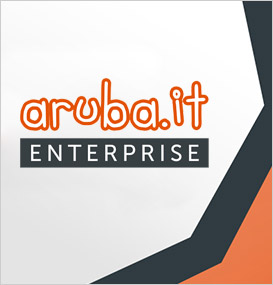
The mission of Openwork technologies has always focused on the strategic approach to defining and optimizing business processes through visual languages as a replacement for programming languages (no-code approach). In the short time since the launch of the Jamio openwork BPM platform, and the resulting trajectory of growth in data volumes and traffic, the need to partner with increasingly high-performance and secure infrastructure and services, such as those offered by Aruba's Cloud Server, has become evident.
Several years have already passed since the migration of some Jamio platform services to Aruba's Virtual Private Cloud, which, thanks to its ability to remain perfectly aligned with Openwork's needs, enhances the collaboration with Aruba Enterprise by continuing to provide certainty not only on the functional aspect but also from the strategic point of view, therefore, related to the certifications required by different Jamio customers (e.g., public administrations) for compliance with specific conformities.
All of this has been explained at length on enterprise.aruba.it through a case study dedicated to Openwork, its Jamio platform and the certified services of its technology partner Aruba Enteprise, an in-depth study made possible also thanks to the valuable collaboration of Alessandro Cortese, IT & Devops Director at Openwork.





